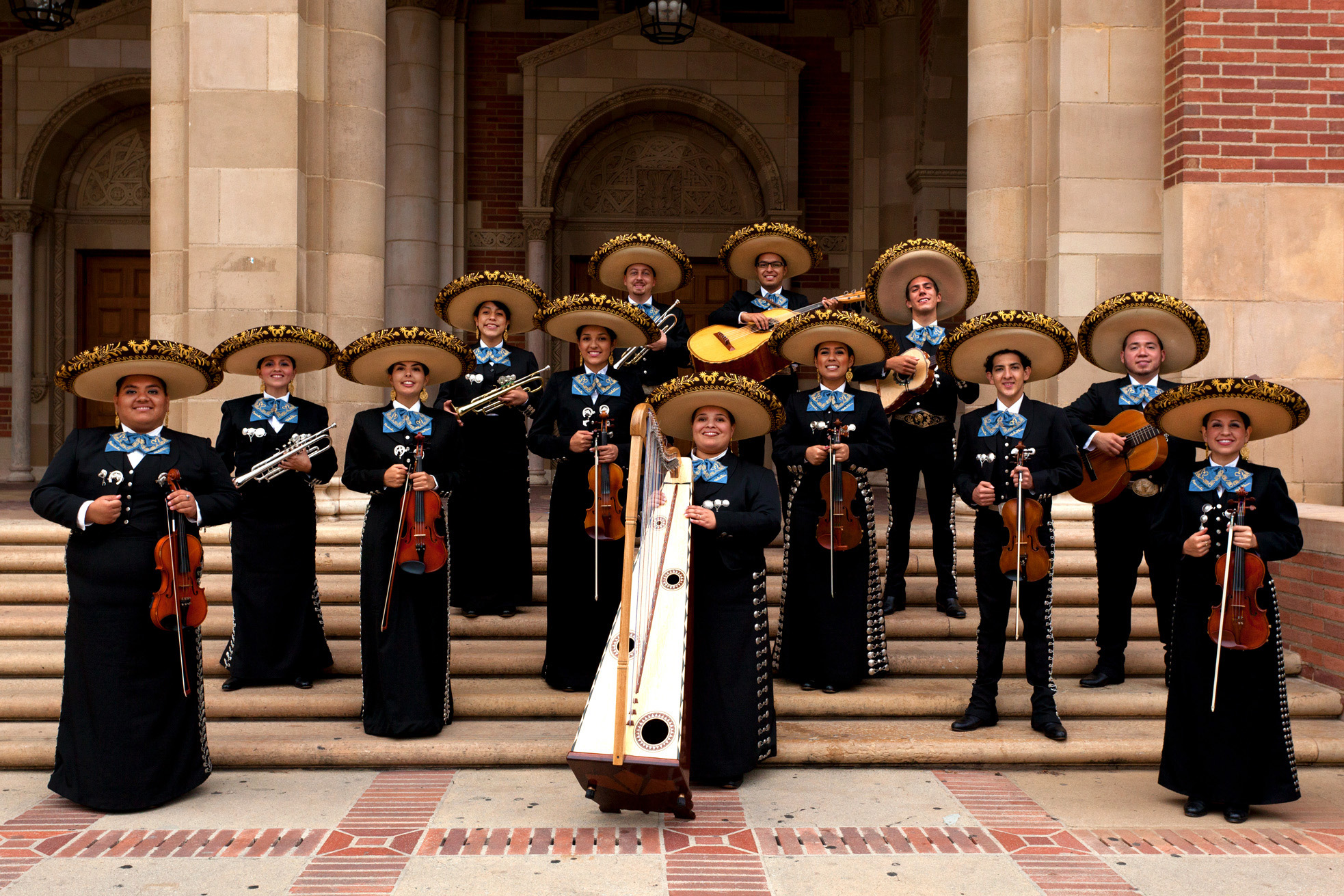In the wake of jack-o’-lanterns and witches on brooms, it’s that time of year when pan dulce, papel picado and sugar skulls abound. While most students celebrated Halloween Wednesday, the members of Grupo Folklórico de UCLA will continue the festivities today with their annual DÃa de los Muertos performance in Ackerman Grand Ballroom. Student group Mariachi de UCLAtlán will also perform, but in the Fowler Museum.
DÃa de los Muertos, or Day of the Dead, is a holiday celebrated in Mexico and some Latin American countries. From creating altars that commemorate the lives of the dead to visiting cemeteries or decorating sugar skulls, DÃa de los Muertos celebrations exist in varied forms but maintain a spirit of remembrance for those who have passed away.
Third-year business economics student Ariana Cervantes has turned to traditional Mexican dance as a way of honoring the dead on this day.
“Both my mom and dad danced when they were in elementary school in Mexico,” Cervantes said. “I had seen performances, but I never thought I’d be capable of learning it.”
As the artistic director of Grupo Folklórico, Cervantes puts together all of the songs that the group dances to, leads practices and rehearsals and even choreographs each of the group’s routines.
Cervantes said Grupo Folklórico will begin its annual Day of the Dead event with arts and crafts, face painting and a community altar.
“(The community altar) is one of the big things aside from our performance,” Cervantes said. “We invite all of our members and everyone who attends to contribute to it, whether it be a photograph of someone who’s passed, or just an item that belonged to them or reminds you of them, or maybe even a piece of food.”
The group’s performance will be the final activity of the evening, and the dancers will have their faces painted to look like skulls known as “calaveras.” Of the five songs that the group will be dancing to, Cervantes said that two in particular are commonly used for Day of the Dead celebrations because they refer to witches and other dark elements.
“One of the songs is called “˜La Bruja,’ and it’s from the region of Veracruz,” Cervantes said. “At pretty much any DÃa de los Muertos event that you go to, this is one of the songs that you’ll see, just because of the lyrics of the song and the style. You’ll see how the ladies are super serious.”
In the dance to “Los Viejitos” from Michoacán, the performers will wear masks to look like older people, referred to in Spanish as “viejitos.”
Jorge Montes, a fourth-year history student and assistant coordinator of Grupo Folklórico, said that these songs and the dances convey the sentiment of Day of the Dead.
“These songs are used for the traditional dances because of their theme. “˜La Bruja’ means witch, so that goes with the dark and death theme that DÃa de los Muertos is all about,” Montes said.
JazmÃn Morales, a fourth-year ethnomusicology student said that, like Grupo Folklórico, Mariachi de UCLAtlán will also be performing traditional songs at the Fowler Museum to celebrate Day of the Dead, including “La Bruja.”
Through their singing and dancing, both of these student groups will be paying homage to their deceased family members and friends by honoring the traditions of Mexican culture, including a ceremony to call upon the presence of the dead.
“The Mayan-inspired ceremony calls in the spirits to make sure that, as we are dedicating our performance to them, they are there,” Cervantes said.
Email Seikaly at eseikaly@media.ucla.edu.
